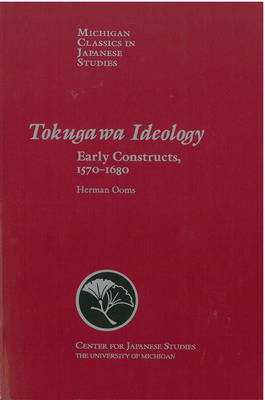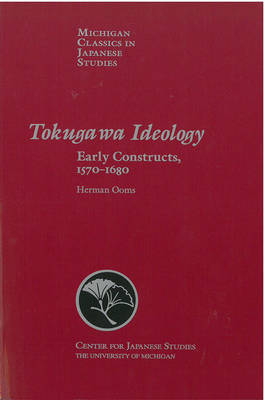
- Afhalen na 1 uur in een winkel met voorraad
- Gratis thuislevering in België vanaf € 30
- Ruim aanbod met 7 miljoen producten
- Afhalen na 1 uur in een winkel met voorraad
- Gratis thuislevering in België vanaf € 30
- Ruim aanbod met 7 miljoen producten
Zoeken
Omschrijving
Relying on a broad range of theoretical writings on the problem of ideology the author has formulated their own interpretations of the formation of early Tokugawa ideology. Instead of synthesizing these theoretical approaches, he has worked them into analytical essays that constitute this book. The opening chapter, without being a theoretical discussion of ideology, offers some historical considerations. The purpose of this study is not to illustrate a single interpretation of ideology through a discussion of a particular historical period, but to come to an understanding of a specific historical discourse.The first chapter provides answers to the twin questions of locating a chronological beginning for the phenomenon under study and forming a proper vantage point for the exposition that follows. Chapters 2 and 3 trace the articulation of a new political discourse as predominantly a religious one that sacralized the rulers and the polity. Chapter 4 highlights the manifold manner whereby the Tokugawa bakufu was acquiring ideological significations. Chapter 5 makes a diachronic sweep of the institutional and ritual arrangements that affected a recentering of all public symbols around the new focus of power in Edo. Chapters 6 and 7 examine Yamazaki Ansai writings. The final chapter discusses the way in which the study reconstructs early Tokugawa ideology and the validity of the authors approach. [preface]
Specificaties
Betrokkenen
- Auteur(s):
- Uitgeverij:
Inhoud
- Aantal bladzijden:
- 368
- Taal:
- Engels
- Reeks:
- Reeksnummer:
- nr. 18
Eigenschappen
- Productcode (EAN):
- 9780939512850
- Verschijningsdatum:
- 1/01/1998
- Uitvoering:
- Paperback
- Formaat:
- Trade paperback (VS)
- Afmetingen:
- 152 mm x 228 mm
- Gewicht:
- 453 g

Alleen bij Standaard Boekhandel
+ 64 punten op je klantenkaart van Standaard Boekhandel
Beoordelingen
We publiceren alleen reviews die voldoen aan de voorwaarden voor reviews. Bekijk onze voorwaarden voor reviews.











